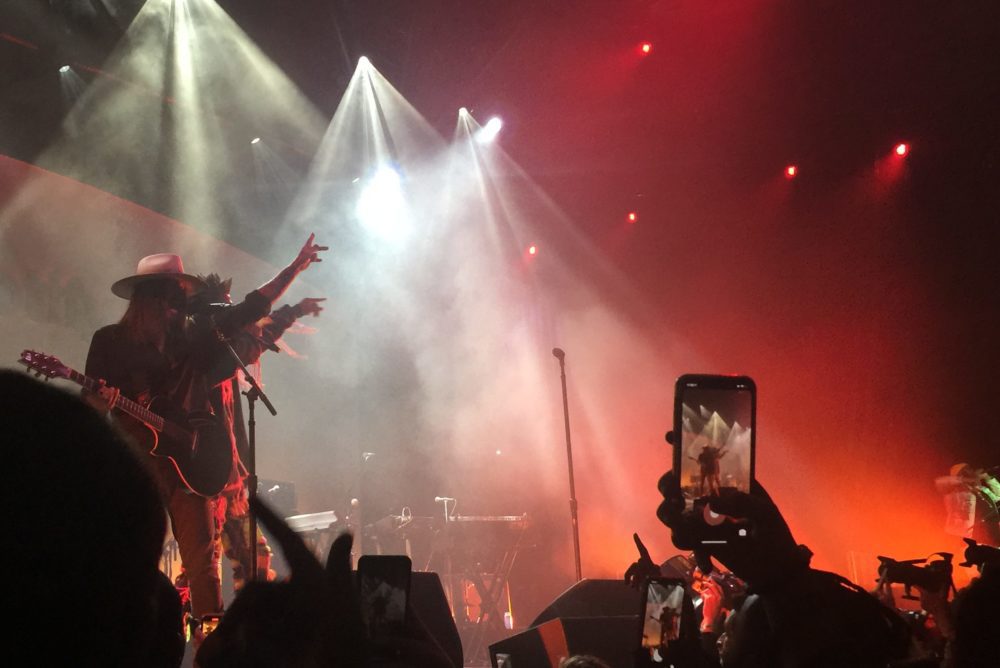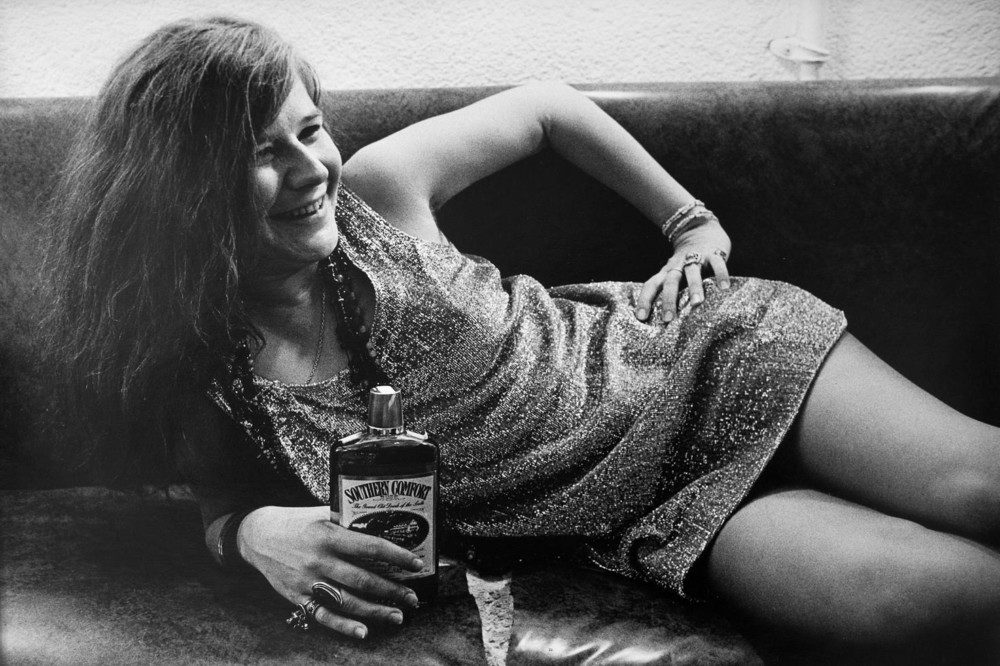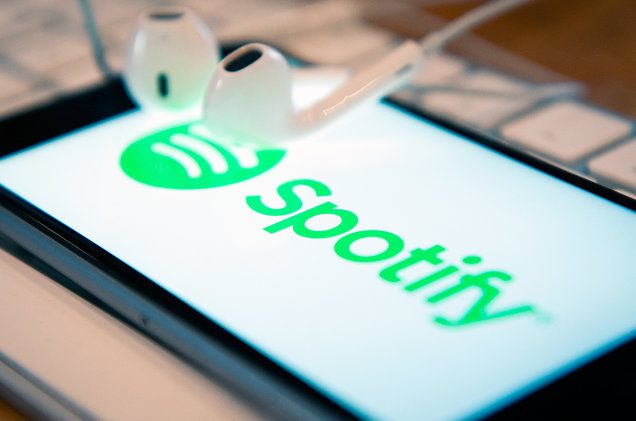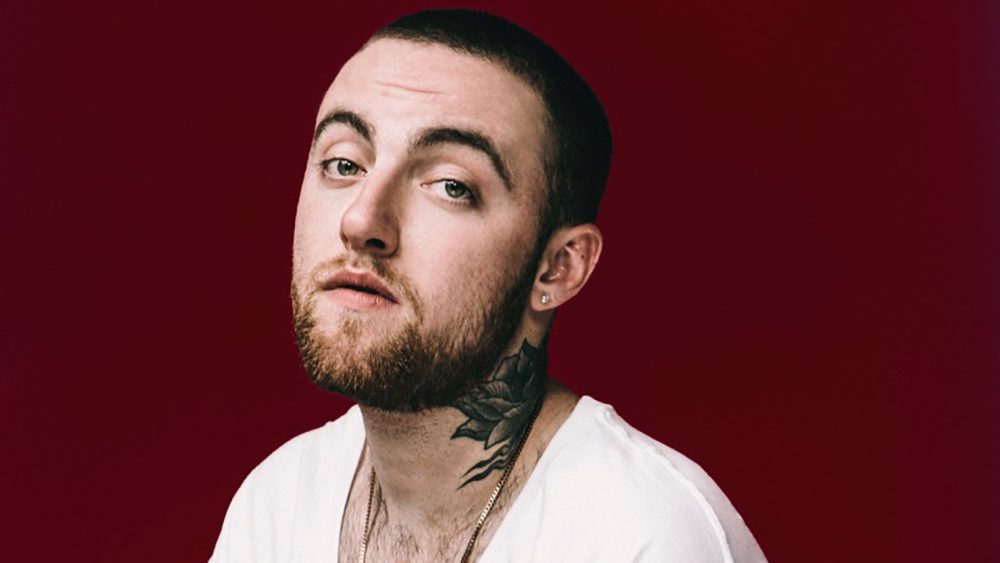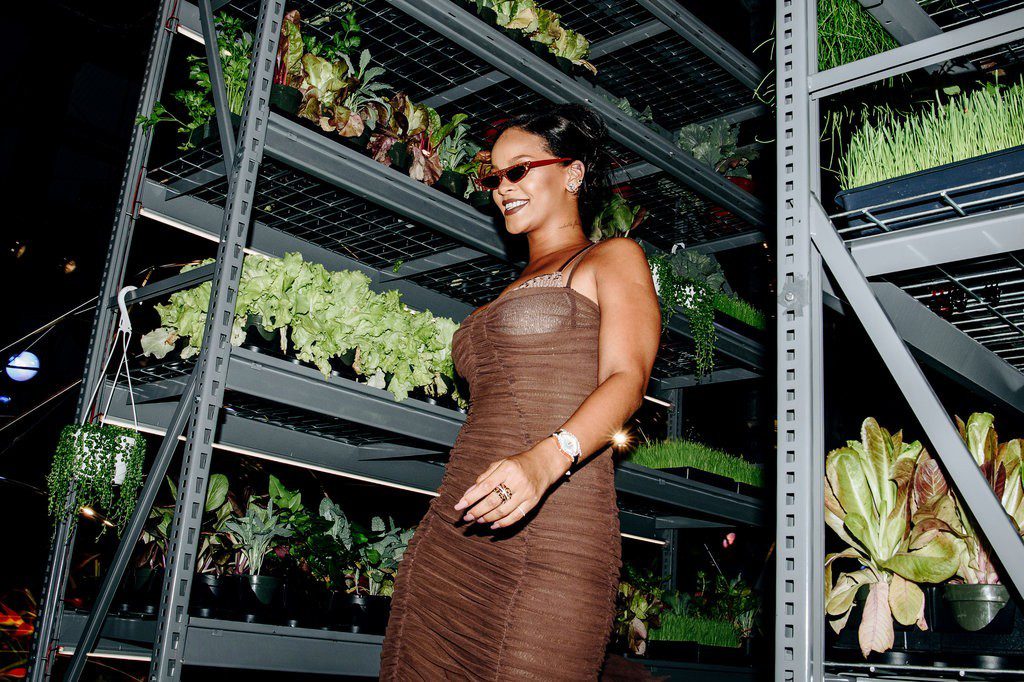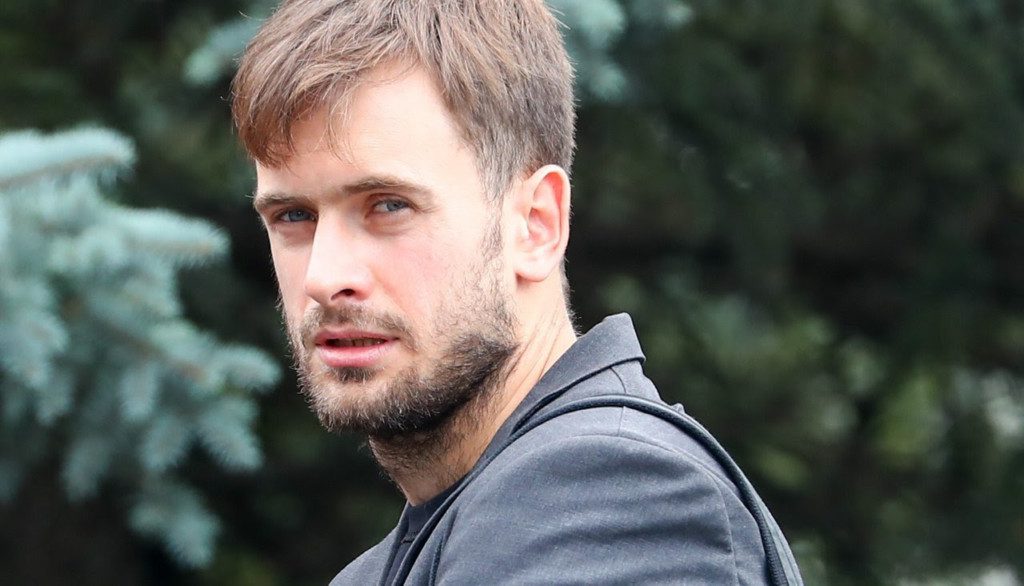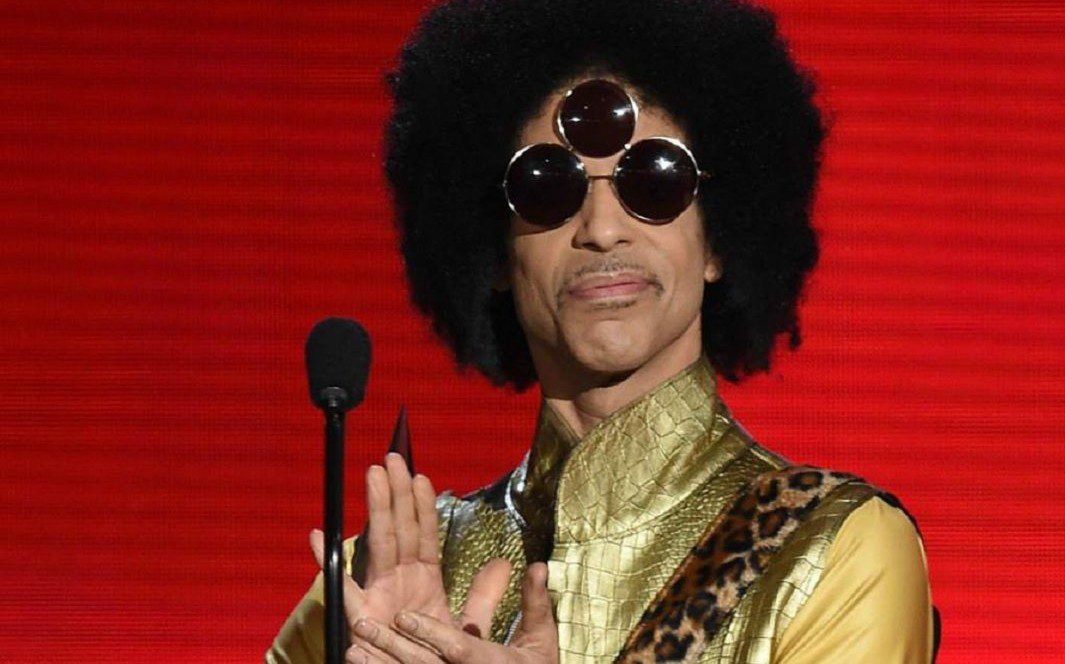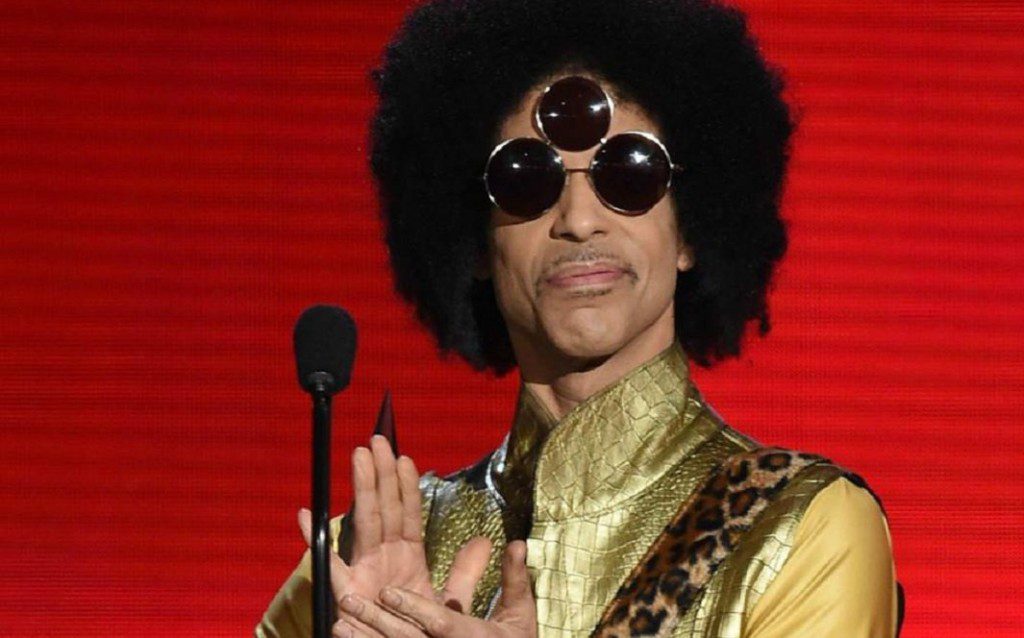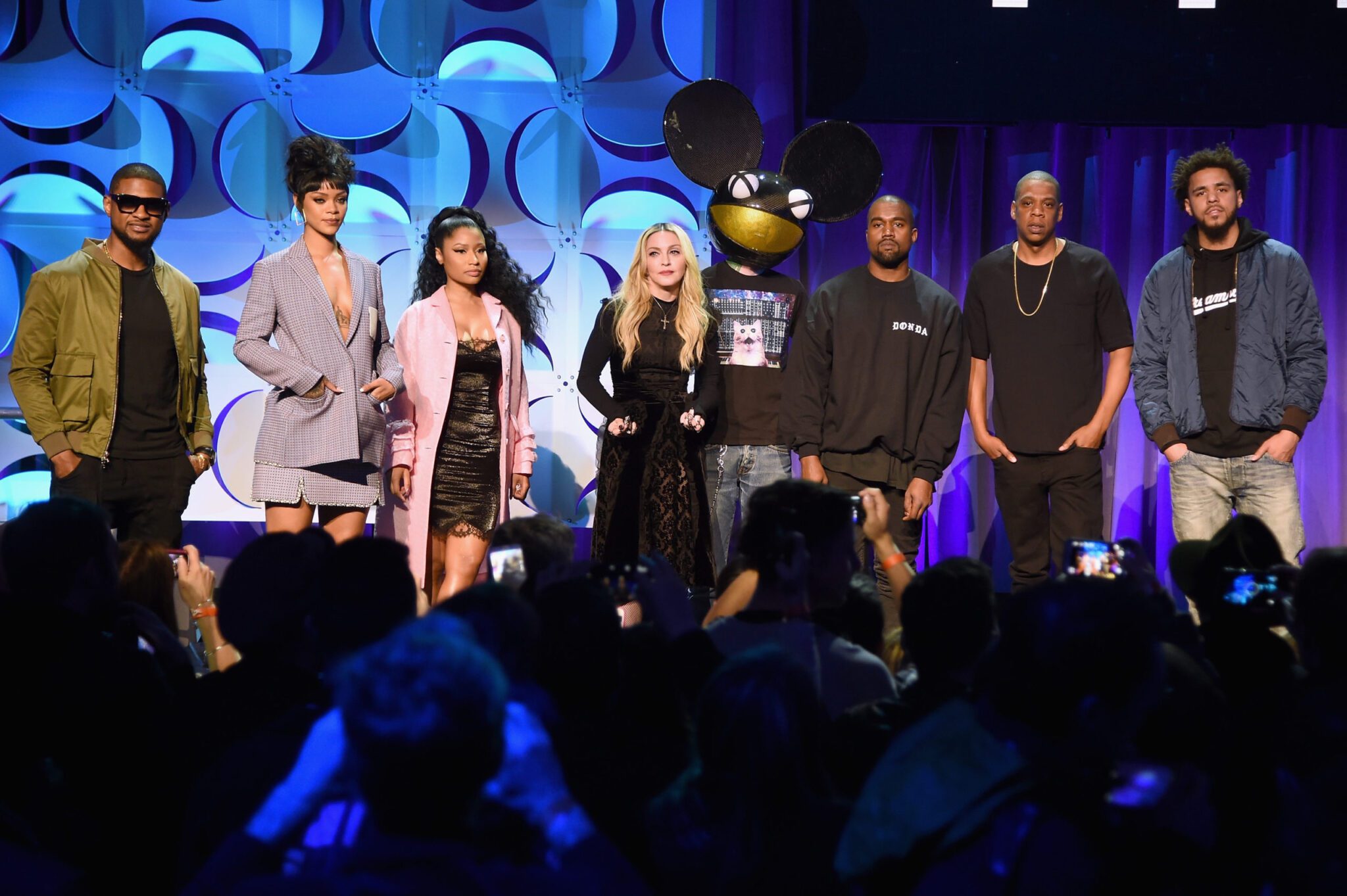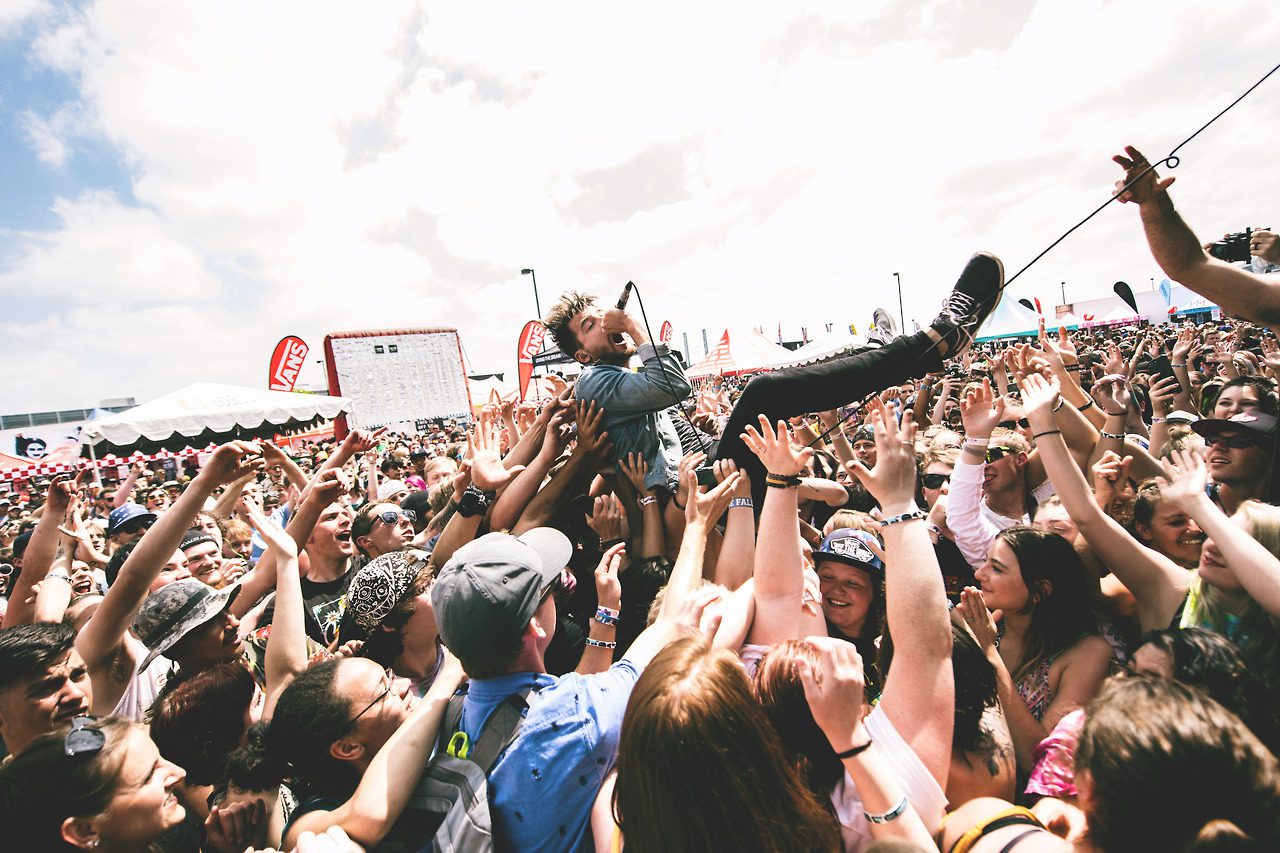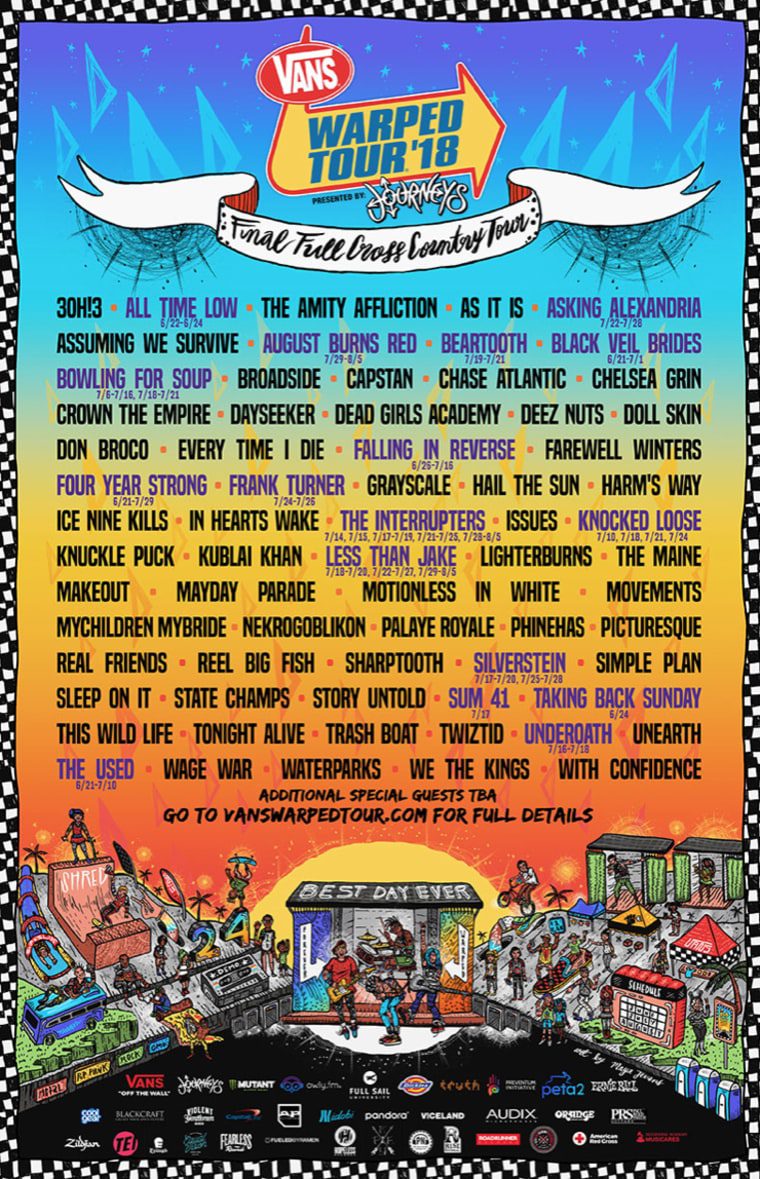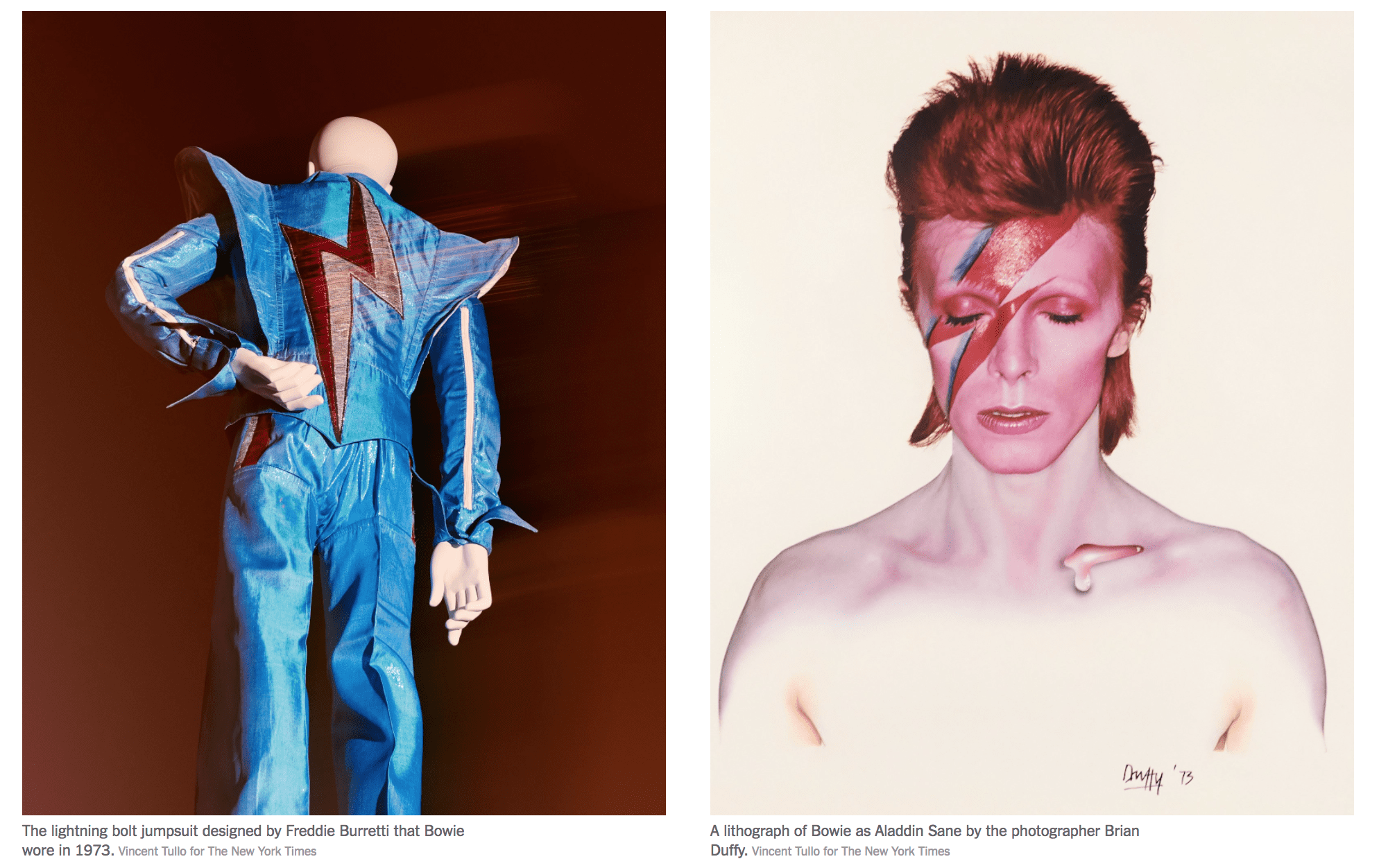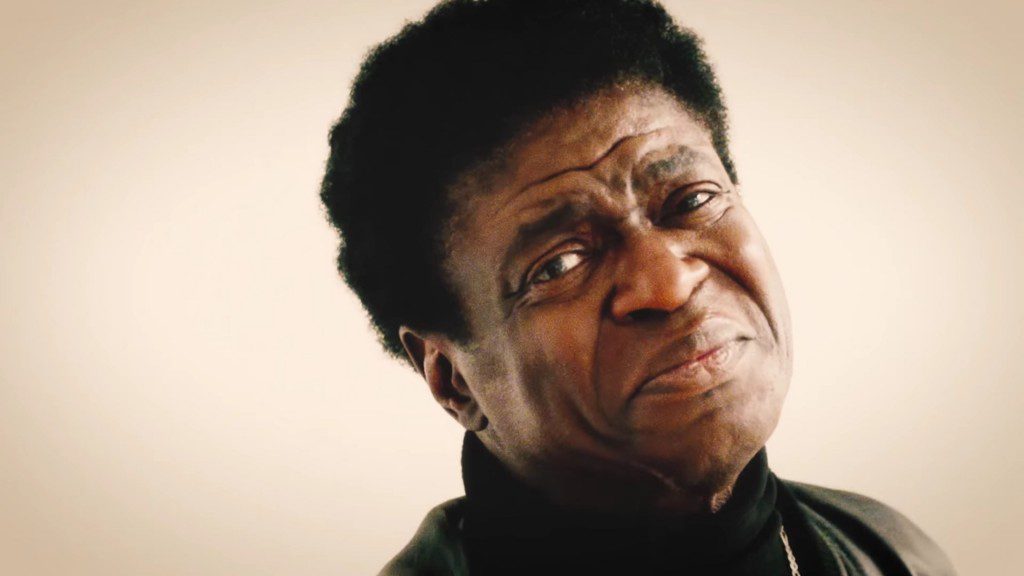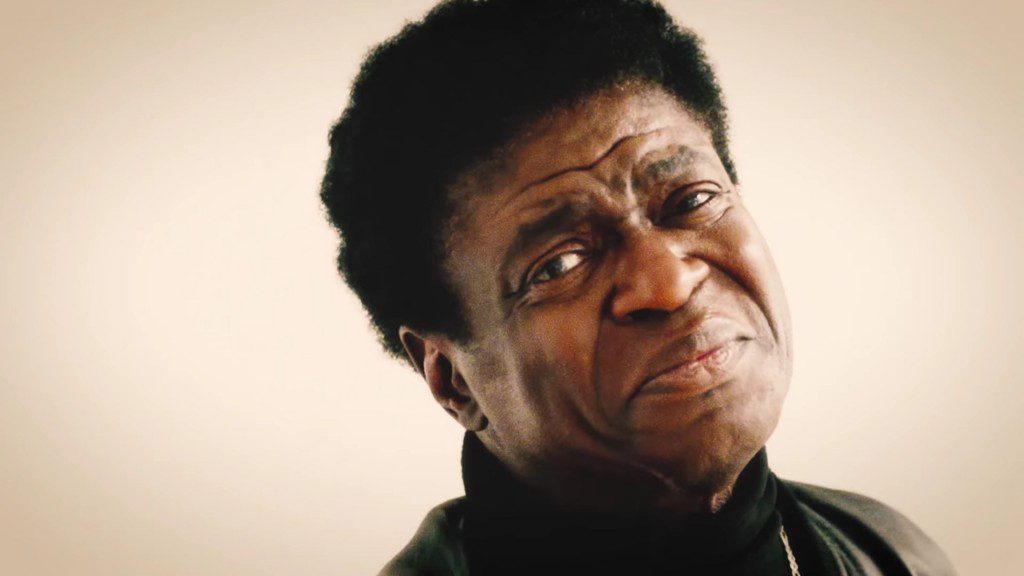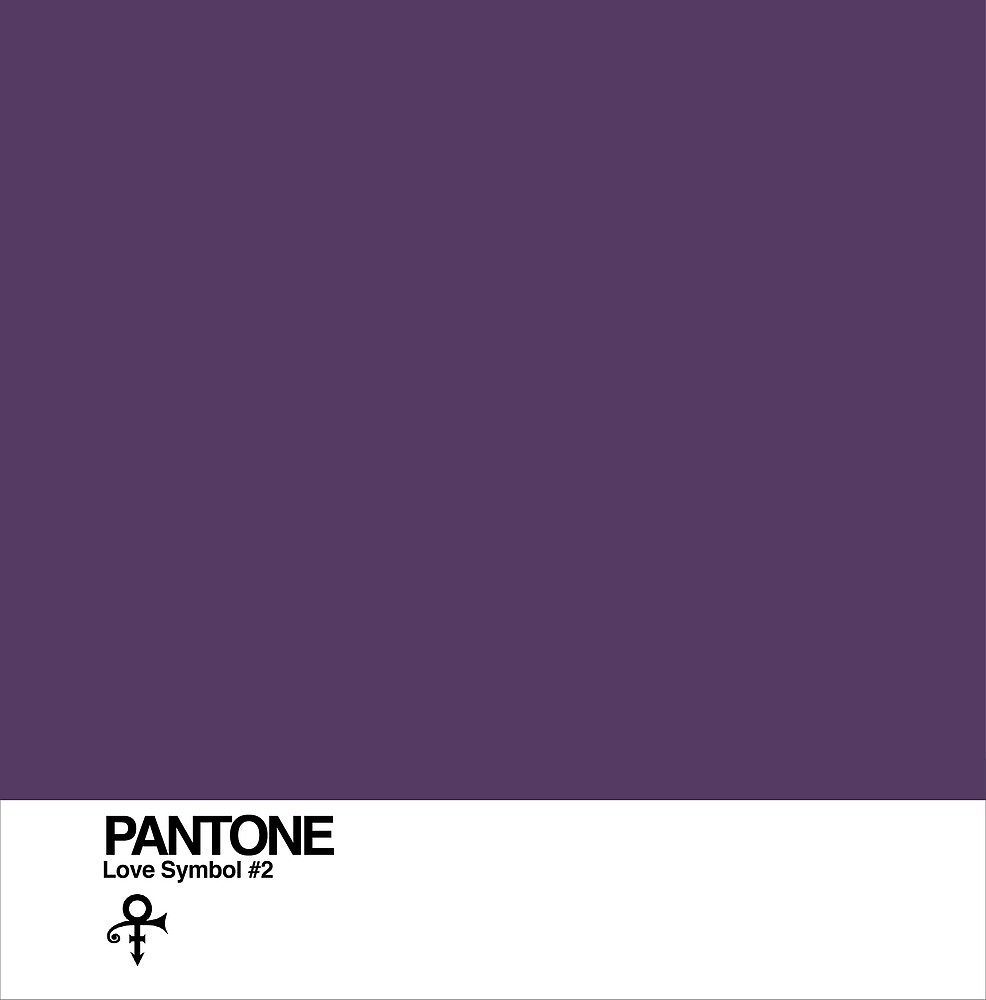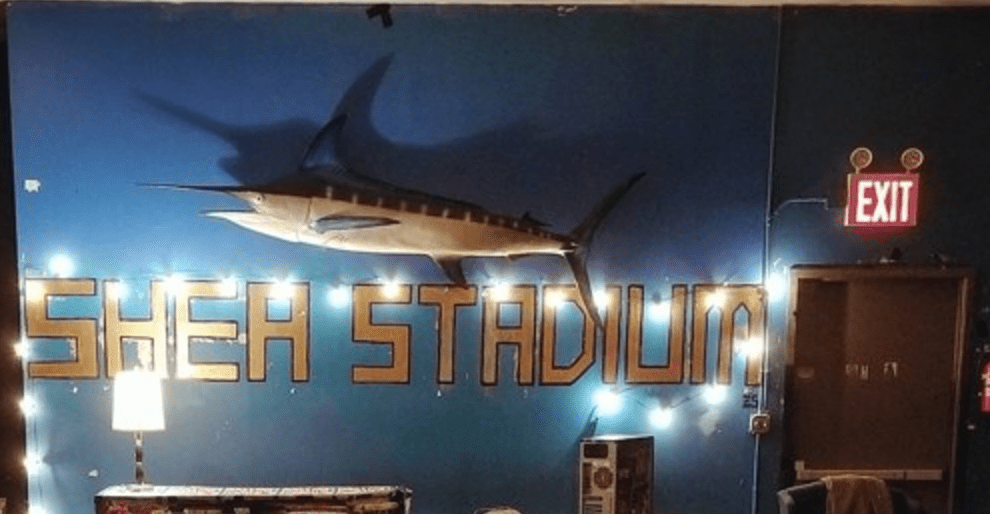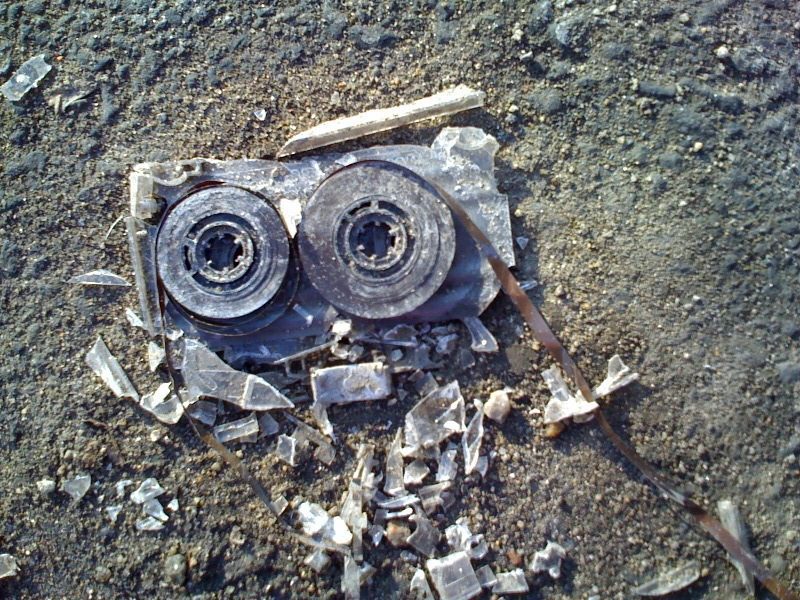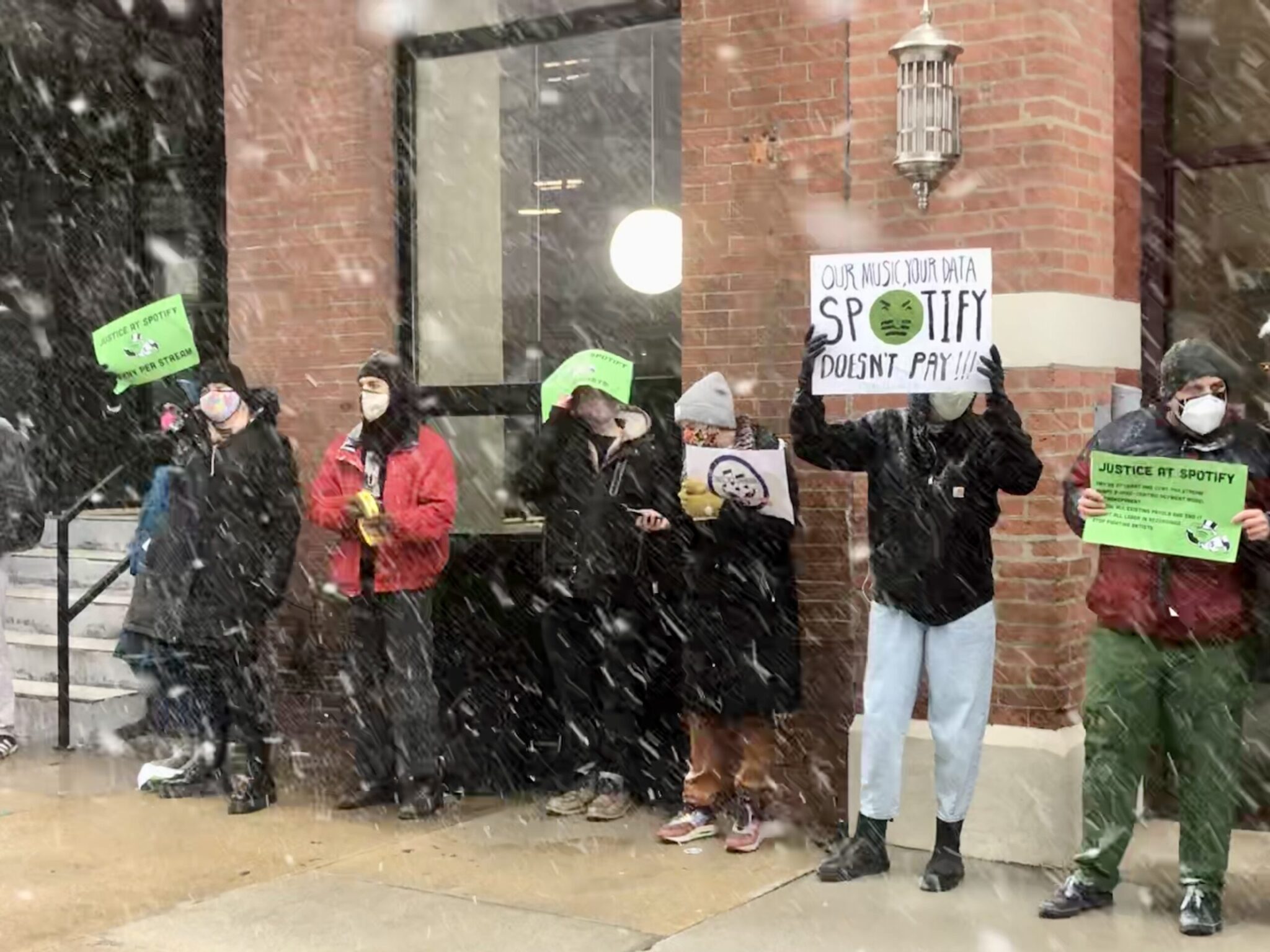
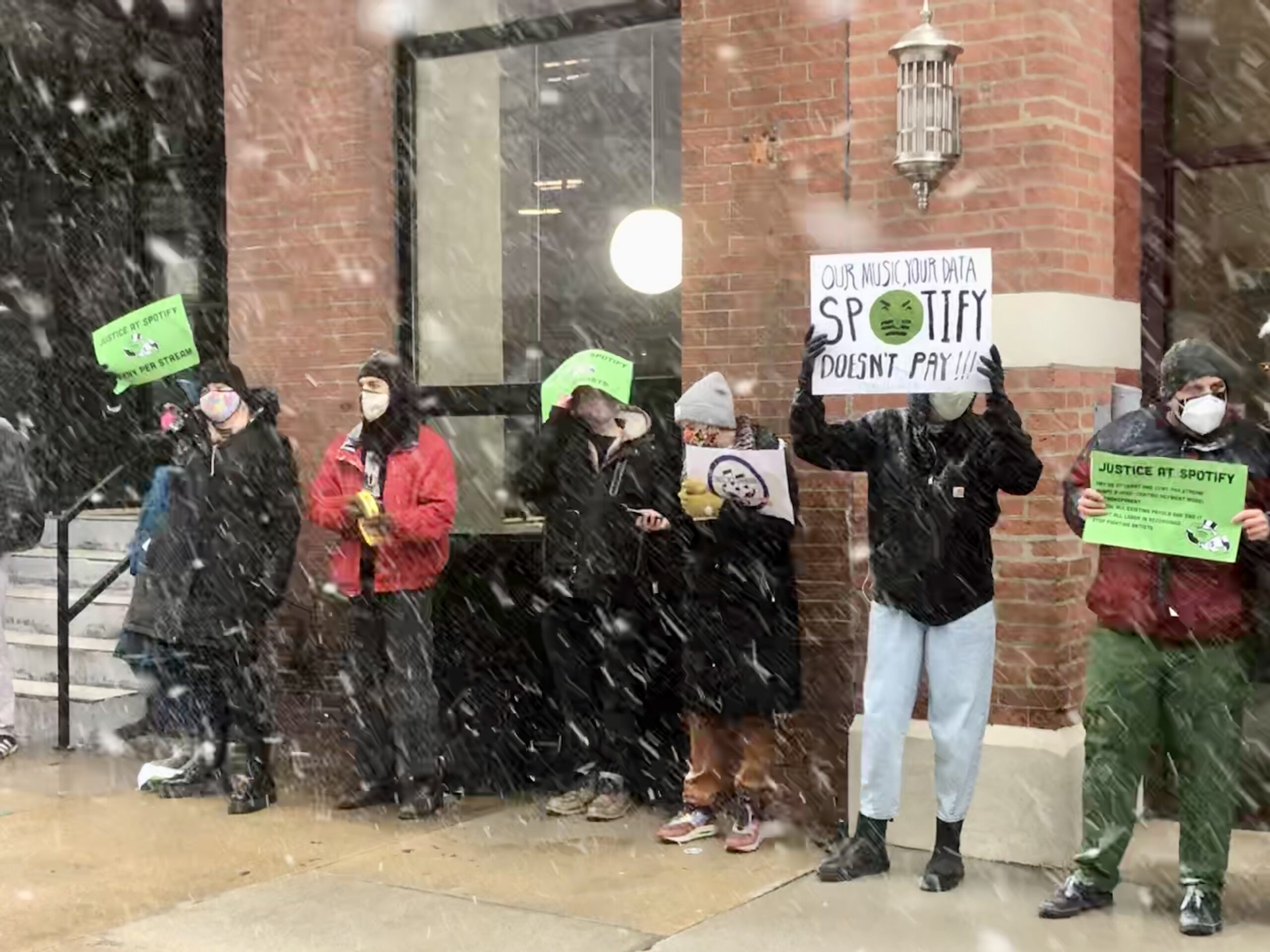
“We got music. We got rhythm. Don’t exploit us with your algorithm!”
That was just one of the slogans chanted by dozens of musicians and supporters outside of Spotify’s Chicago offices on Monday, March 15. Organized by the Union of Musicians and Allied Workers, Justice at Spotify was an hour-long demonstration calling for the streaming giant to pay artists a penny-per-stream, among other demands and material interests, to help build more sustainable, equitable, and inclusive music communities.
Naturally, the group of protestors did what they do best—make noise. With a drumline, tambourines, horns and more, the crowd wasn’t deterred from its mission by the day’s fierce winds and snow. Throughout the day, the events repeated across the globe in cities like San Francisco, New York, Toronto, Stockholm, Madrid, Melbourne, Frankfurt, and others.
The music and live entertainment industries have been hit hard by the COVID-19 pandemic. Performance venues across the United States have been shuttered for a year now, causing a ripple effect of putting touring musicians, sound engineers and lighting technicians, event photographers, DJs and more out of work. Even with Congress passing the $15 billion Save Our Stages Act as part of the December 2020 COVID-19 relief bill and continuing efforts helmed by NIVA (National Independent Venue Association) and CIVL (Chicago Independent Venue League), concert halls will be the last to fully re-open once we’ve returned to a shred of “normalcy.” While some venues have recently re-opened for bar service in Chicago, this remains the truth despite optimism toward summer festivals from city government.
According to Billboard, the Small Business Administration hasn’t even started accepting applications for the grants yet—meaning funds won’t arrive before May. And though the SBA recently announced venues would be able to apply starting April 8, open doors don’t necessarily equal packed shows making enough to keep the lights on.
For artists, a year without touring—the way most actually make money—further exposed the way they’d been misled and taken advantage of by platforms that wouldn’t exist without them. Last Spring, the Union of Musicians and Allied Workers (and soon after that summer, the Chicago chapter) was born out of necessity, fighting for transparency and fair compensation for those who often work multiple gigs to supplement their music earnings and don’t often qualify for unemployment benefits despite the hours dedicated to their craft.
“Companies like Spotify have savior complexes. They will say they’re trying to save the livelihoods of musicians everywhere and that they invented this amazing new way for musicians to make money when they really are not compensating the workers who create that content they offer,” Andrew Clinkman, member of UMAW’s Chicago chapter and its streaming subcommittee, and anchor for last Monday’s event, explained.
Clinkman plays in bands Marker and Spirits Having Fun, and worked as a guitar teacher pre-COVID. Luckily, he’s been able to continue to do so virtually.
Musicians, he argues, aren’t viewed as workers contributing to the value of Spotify’s platform. Similar to the organizing around securing protections for drivers and delivery persons for services like Lyft and Instacart, currently considered contract workers, Clinkman says there’s a clear division of labor that Spotify is either “refusing to acknowledge or completely oblivious to.”
He believes in the former.
“We’re literally asking for pennies,” he continues. “They love to hide behind the opacity of the algorithms; how everything is determined technologically. The money is there. We all know it. Get it together.”
UMAW launched its campaign focused on Spotify’s exploitation in October last year. According to the union’s calculations, each stream is worth, on average, $0.0038. Spotify, which surpassed revenue targets in Q4 according to Variety, is currently valued over $60 billion–with 155 million paid subscribers and 345 million total users.
When announcing the year-end results, CEO and founder Daniel Ek said, “Despite global uncertainty, it was a great year for Spotify.”
Apart from streaming pay, UMAW is asking that Ek and Spotify adopt a user-centric model that recompenses artists directly (akin to Soundcloud’s new “fan-powered” royalties pay system based on overall listening time instead of streams), transparency regarding closed-door contracts, reveal then end existing payola or pay for play, credit all labor in recordings, and “end legal battles intended to further impoverish artists.”
The platform uses a “pro-rata” model, which pools all revenue and distributes it to artists according to what UMAW calls “a complex scheme;” ensuring that acts with the most resources behind them—the household names at the biggest labels—accumulate a greater percentage of streams. No one’s expecting to get checks of the size the top 1% of artists—Ariana Grande, Drake, Billie Eilish, Cardi B—receive. But that 1% often receives 90% of the streaming revenue thanks to the existing model, even if you never listened to them.
In the days following UMAW’s Justice at Spotify action, the streaming platform unveiled a new effort, apparently months in the making, called Loud & Clear. In a series of tweets, CEO/founder Ek explained the new “royalty transparency” site was launched to “shed light on the complicated economics of music streaming.”
Notably, the company’s flashy graphics boast it’s paid over $23 billion in royalties to rights holders including over $5 billion in 2020 (up from $3.3 billion in 2017). It also notes that 1.2 million artists have over 1,000 listeners—it doesn’t, however, say how many artists total have a presence on the platform—and that 15%, or 184,500, of their catalogs generated recording and publishing royalties of at least $1,000. Buried beneath the positive spin and industry jargon, the company doesn’t directly acknowledge any of the specifics highlighted by UMAW or list long-term plans of action.
In response, the union released a statement which reads, in part, “We are pleased that Spotify has recognized the legitimacy of UMAW and the artists around the world who took action this week to demand better payment and treatment from the streaming giant. However, Spotify has failed to meet any of our demands.”
In a Twitter thread, UMAW continued:
“The company consistently deflects blame onto others for systems it has itself built, and from which it has created its nearly $70 billion valuation. We asked for transparency, but this website answers none of our questions about the sources of Spotify’s income in addition to subscriptions and ads, payola schemes for playlist and algorithm prioritization, or the terms of their contracts with major labels.”
Ahead of these developments, Greg Obis, co-owner of Born Yesterday Records, mastering engineer at Chicago Mastering Service, and guitarist in punk band Stuck, further described the trickle-down effects of Spotify’s measly royalty payments. As Obis points out, it’s the independent artists shouldering much of the costs.
“I’d been aware of this very brutal payment structure that exists in the streaming world,” Obis said on a conference call with Clinkman. “Seeing it from the audio engineering standpoint and the record label standpoint has been really formative. This is where the ‘AW’ (allied workers) of the UMAW comes in because… it’s the musicians who are paying the recording engineers, and need to go on tour and hire these people. The music industry is a whole ecosystem.”
With these artists carrying the weight, the idea of recouping expenses feels impossible. If people are seeking out new music and listening, the artist deserves their fair share of that spin. With the battle over the $15 minimum wage at the forefront of the country’s consciousness, debating what a “living wage” is and who qualifies to be paid one, UMAW co-founder Damon Krukowski put it like this in a recent piece for the New York Times Magazine Music Issue’s 5 Notes From a Quiet Year: “In order to earn the equivalent of a $15-per-hour job, you’d need 657,895 streams of your music per month—for each person in your band.”
“The first band my partner Naomi Yang and I were in, Galaxie 500, sees about three-quarters of a million monthly streams on Spotify,” Krukowski continues, “which earns the three members about $1,000 each. That’s for material we outright own.”
In many cases, “rights holders” are more than just the artists. That $1,000 is whittled down by the time any of it reaches the artist’s bank account. Detractors and skeptics of groups and actions like UMAW’s have questioned its expectations; pointing to long-standing abuses of power by major labels and management firms throughout history and suggesting not just anyone should be able to “make a living” off music; asking what “justifies” it. Cultural commentators like Bill Maher have attempted linking coverage of inequities in music streaming to tired talking points conflating merit, talent, and a world where “everybody gets a trophy,” all the while distorting the context and overall goals of the artists involved. Obviously, those invested in the collective consciousness have considered that.
On the phone, Obis points to a regularly regurgitated talking point many creatives, particularly musicians, hear when first realizing the romance of the “struggling artist” myth is anything but. “I think in this country we’ve so internalized, in different music communities, that making money for playing music is wrong or bad,” he says matter-of-factly. “I get into arguments with friends of mine all the time, and not like I’m a fervent capitalist or something, but it’s very wrong-minded for people to say you have to just be in it for the love or you have to always be an amateur. Eventually I realized it’s using the punk ethos for a perverse reason to never expect anything better for themselves.”
“It’s meager asks that we’re making from Spotify,” Obis concludes. “It’s very possible, it’s very reasonable to want to make ends meet by doing what you’re good at and what you love doing.”
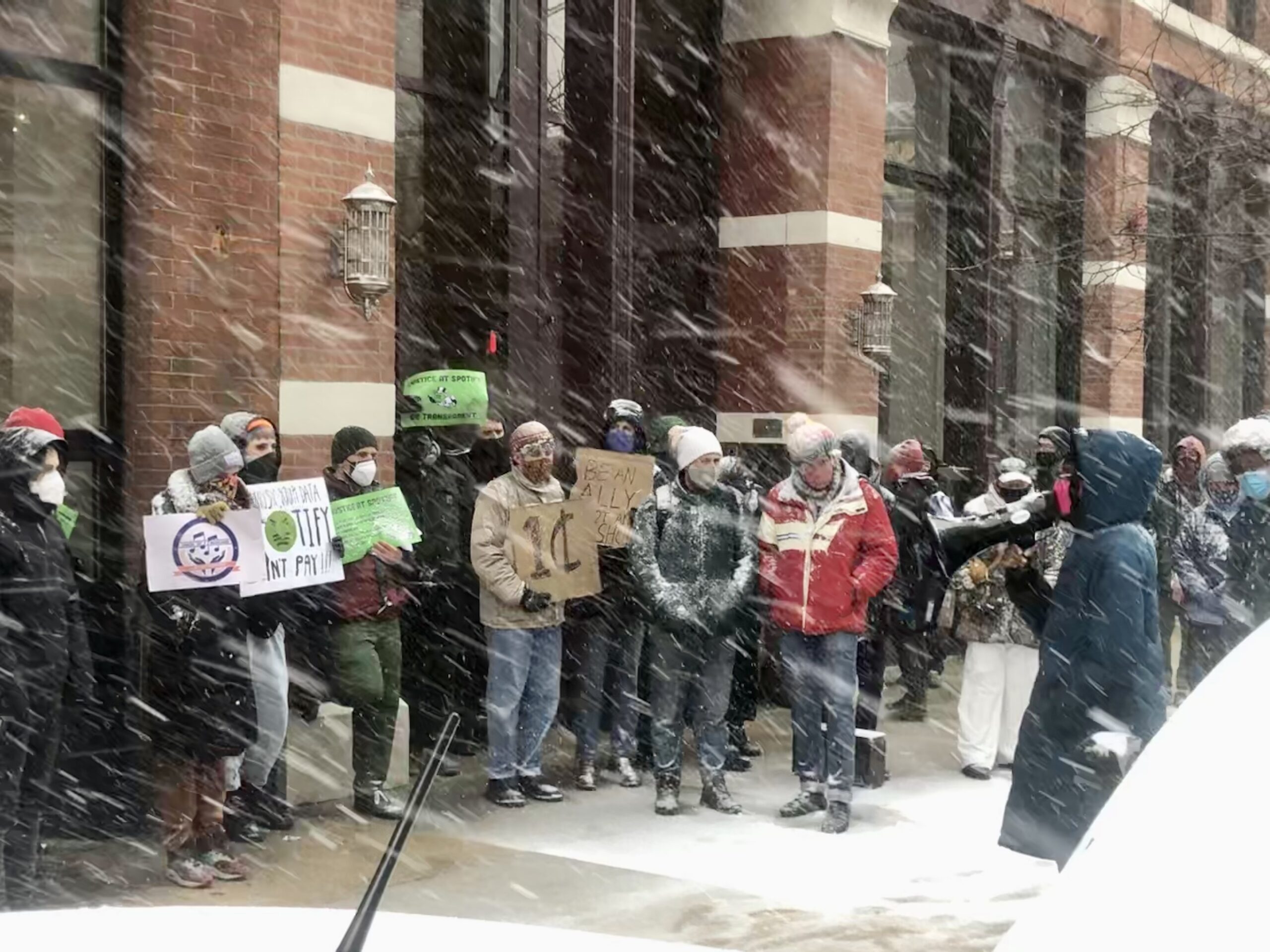
At Monday’s rally, local artists Sophia Nadia of psychedelic rock outfit Cold Beaches and Indigo Finamore from alternative R&B duo Oux echoed similar experiences.
“Is it normal to be homeless if you’re a musician working 60-70 hours a week sometimes?” Nadia proposed to the crowd, to roaring “No’s.”
“Is it normal to have to fight for the bare minimum to be compensated a cent a stream? I think it’s absolutely embarrassing that we have to stand here today to prove a point,” she persisted. “Spotify’s hiding behind their corporation to try to take advantage of us so they can profit off our hard work, while filling the pockets of musicians who are already millionaires, and I think it has to be stopped.”
When Finamore got on the megaphone, they said that after their band was added to Spotify’s “Best Non-Binary Artists of 2020” playlist, streams of their single “Queer Like Me” passed 25,000. They eventually received a royalty check for $45. A penny-per-stream system would’ve paid the band $250, which could cover costs such as a few extra hours of studio time (some of the city’s most noted studios start session rates at $65/hr), or merchandise printing and shipping costs, for example.
“I mean, how are you supposed to put a dollar value on a song?” Anna Holmquist of the group Ester and host of the Bad Songwriter podcast asked on a phone call the Friday before the protest.
“What makes one song better than another? There are some that are ‘bad,’ but people love songs in different ways,” Holmquist points out. “A song or album that was there for me, that’s worth a lot. So the fact that you’re streaming that song and crying to it and that artist is getting .003 cents for your experience, that sucks.”
Holmquist, a member of UMAW’s accountability subcommittee and national steering committee, senses Spotify has artists in a bind – especially smaller acts like theirs. Without the platform’s discovery capabilities, they argue, it’s as if independent artists don’t exist to promoters or booking agents. Spotify’s ubiquitousness and cornering of the market allow its detrimental practices to succeed, and the Taylor Swift move of removing one’s music from the platform could do more harm than good – especially as the future of live music remains uncertain.
“Not being on [Spotify] just cuts out another revenue stream,” Holmquist sighs. “If you’re not going to be on any of the streaming services, then you’re choosing not to make money, which – with the amount of money you make from being a small DIY musician – feels rough. If you’re putting money into albums – albums that cost money to make, that cost money to promote – then you better try to get as much money back as you can.”
As important to the union’s success is reinvestment in what it means to be a music community. Once COVID-19 vaccine distribution increases and scenes actively rebuild, both Clinkman and Holmquist see it as part of UMAW’s job to facilitate access to appointments (as different opportunities may be available to vaccinated musicians) and other protective measures, connect with other localized groups working toward safer, equal music spaces and opportunities, resources on navigating DIY recording and touring, and address the unnecessary sense of competition propelled by Spotify and others.
It’s part of the industry’s “trap,” Holmquist expressed, to make indie artists feel there’s only x-amount of slots for their type of sound despite claims of “giving a million creative artists the opportunity to live off their art” by the likes of Spotify. UMAW insists on lifting each other up.
“We demand moving to something that is reflective of the diversity of artists on the platform and encourages artists to do their own thing,” Clinkman rebuts. “There’s something anti-competitive, in a positive way, about demanding things in that way. UMAW is a symbol of being able to band together and understand this is all affecting us in the same ways. If we’re all pulling in the same direction and working together, we can make it better for each other.”
Monday’s final artist on the megaphone was Manae Hammond, also of Oux and breakout band Hospital Bracelet, who spoke on behalf of the DIY Chi Mutual Aid Fund. Co-founded alongside Zoey Victoria and Sarah Thomas, the group gave micro-grants to artists-at-risk in the midst of the pandemic last year. Hammond said the mutual aid’s efforts are in “lockstep” with UMAW’s mission; what she described as helping musicians and artists through “building dual power” and organized action.
The global shutdown in 2020 put a spotlight on many things taken for granted—one of them being the power the arts, particularly music, have in giving us hope in dark times. Music has always provided an escape from the chaos and acts as a shared language for discussing some of life’s most difficult, complex topics. For some cities, it’s the largest part of their identity and why they’ve become storied destinations. In a year that saw us sheltering in place, unable to travel or ignore what was unfolding in the streets and in Washington, music (as well as literature, film, television, etc.) proved to be vital to our survival. We need all facets of the music industry to work for the artists committed to this understanding, not against them.
“This is just the beginning,” Clinkman told the crowd before it dispersed Monday afternoon. “We’re going to escalate. We’ll be back. They’re going to hear us.”
Follow Union of Musicians and Allied Workers on Twitter, Facebook and Instagram for ongoing updates.

